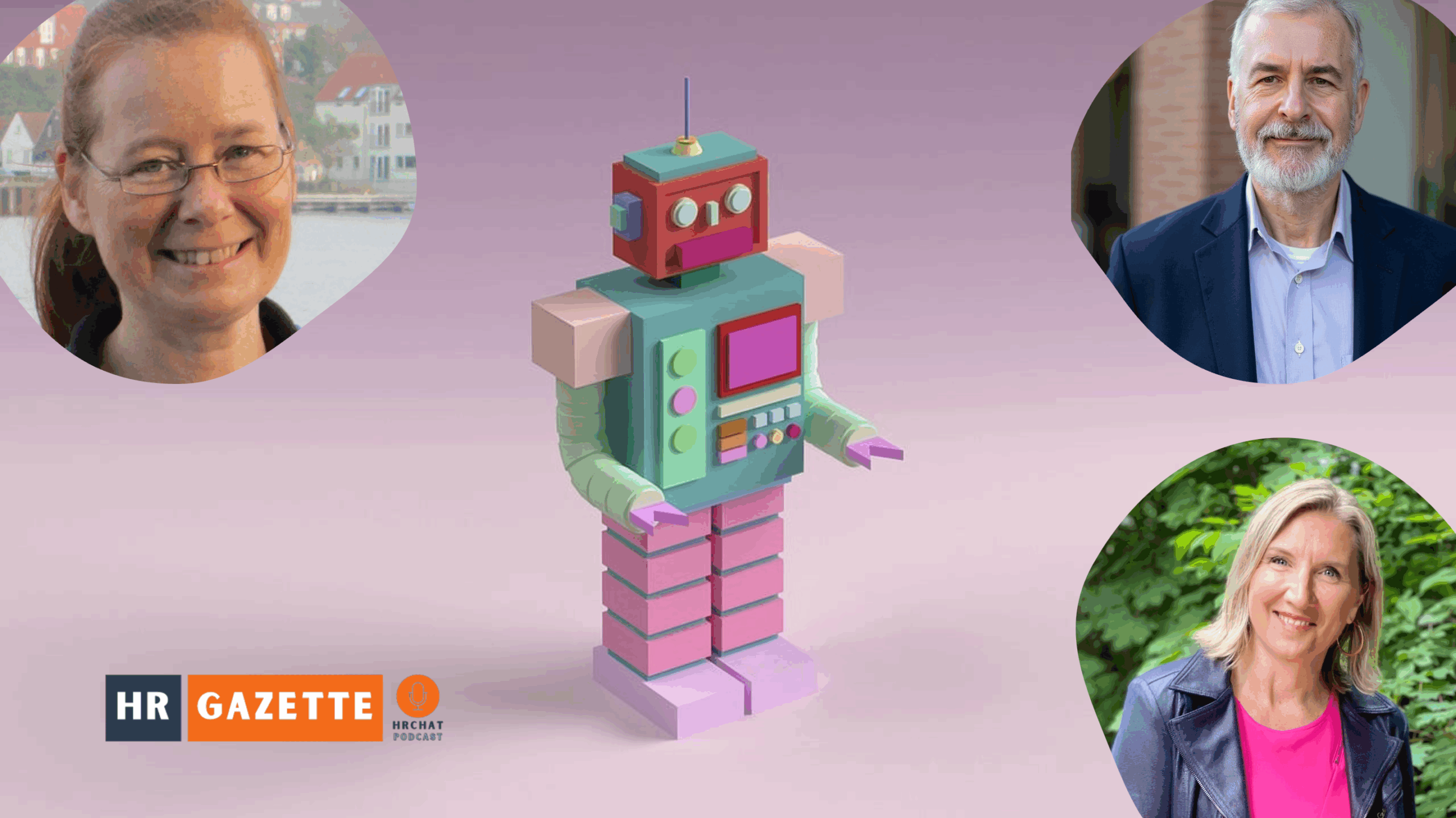
Understanding Robots and Ourselves
As AI continues its rapid advance into our workplaces, it’s easy to focus on the software side – tools like ChatGPT, recommendation engines, and invisible algorithms shaping decisions behind the scenes. But what happens when AI gains a physical presence?
Professor Kerstin Fischer, a leading researcher in human-robot interaction with more than two decades of experience, is helping us rethink what it means to share our professional spaces with machines. In a recent conversation with David Creelman and me, Kerstin explores how robots – real, physical robots – affect us not just technologically, but psychologically and socially.
The Power of Embodiment
Unlike software-based AI, robots introduce what Kerstin calls “embodiment.” They don’t just exist in the cloud—they occupy space, gesture, speak, and create the illusion of presence. This embodiment fundamentally alters how we perceive and respond to them.
“Robots differ from other interactional technologies by means of their embodiment—they have physical bodies in the physical world,” Kerstin explains. This physicality activates a cognitive process known as “depiction,” where people simultaneously recognize robots as machines and assign them human-like traits and intentions. In other words, we create characters out of robots—whether we intend to or not.
Why It Matters to HR
For HR leaders, this has profound implications. Kerstin cites research where robots mimicking the speech patterns of Steve Jobs significantly increased user compliance even when the robots gave incorrect instructions. The emotional and behavioral influence of embodied robots, she notes, is powerful and often underestimated.
We’re already seeing robots deployed in healthcare, assisting with post-surgical mobility, and in offices, acting as telepresence surrogates that help remote workers feel truly “present.” “With the robot, it was as if she was there,” Fischer recalls, describing a remote student using telepresence to connect with peers. The technology fostered not just communication, but a genuine sense of belonging.
A Counterintuitive Insight
Perhaps Kerstin’s most unexpected insight is that embodied robots may pose less risk than more abstract forms of AI. “Because of the embodiment of robots, you have an agent,” she explains. “Whereas if you are using AI for human resource management or pre-screening applications, that is not visible.”
This visibility—this agent-based interaction—makes robotic AI more accountable and easier to question. In contrast, algorithmic systems working behind the scenes may escape notice, bias scrutiny, or fail to be challenged, even when making high-stakes decisions in areas like hiring or performance evaluations.
Looking Ahead
As robotics and AI converge in the workplace, HR professionals must consider not just functionality, but perception, ethics, and psychological impact. Fischer’s work reminds us that how people feel about technology—especially when it talks, moves, and occupies physical space, can shape behaviors, relationships, and even compliance in surprising ways.
For those navigating the changing world of work, her insights offer a compelling roadmap to the future of human-machine collaboration.
Questions for Kerstin include:
- Human-AI Interaction: How do human interactions with AI differ from those with physical robots? Are there key differences we should be aware of?
- Workplace Integration: How can businesses prepare their teams for increasing interaction with AI and robots?
- Social Potential: From robot baristas to AI study buddies, what business value do socially capable robots offer beyond repetitive tasks?
- Trust & Ethics: What ethical considerations should organizations keep in mind when deploying AI and robotic systems?
- Future Research: What upcoming trends or research areas do you believe will shape AI’s role in the workplace?
More About Kerstin Fischer
Kerstin Fischer is a professor for Language and Technology Interaction at the University of Southern Denmark and director of the Human-Robot Interaction Lab in Sonderborg. She received her PhD in English Linguistics from Bielefeld University in 1998, after which she did postdoctoral work at the University of Hamburg on emotion in human-computer interaction. She was assistant professor in Bremen 2000-2006 and associate professor for English Linguistics at the University of Southern Denmark 2007-2015. She is senior associate editor of the journal ACM Transactions on Human-Robot Interaction and associate editor of the book series ‘Studies in Pragmatics’ (Brill) and has published 9 books, 35 journal articles and more than 100 conference papers, in which she brings her background in linguistics, communication and multimodal interaction analysis to the study of behavior change, persuasive technology and human-robot interaction.
Want to explore more about the rise of embodied AI in the workplace? Tune into the full episode featuring Professor Kerstin Fischer!

